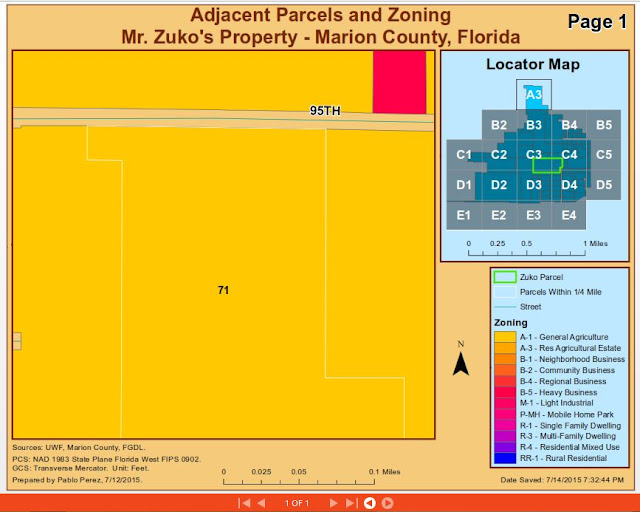Urban
Planning – GIS for Local Government
1. Does your property
appraiser offer a web mapping site? If
so, what is the web address? If not,
what is the method in which you may obtain the data?
Yes, the County of Riverside, California
Assessor’s Office (same as the appraiser) has the following portal: http://pic.asrclkrec.com/
Searching for Assessor’s Parcel Number
(property identification number) 961-450-008 returns the following information:
Clicking on “View Parcel Map” returns the
following map:
Otherwise data could be obtained by contacting
the Assessor’s Office via phone at 951-955-6200 or via email at accrmail@asrclkrec.com
2. Most property appraiser’s
websites offer a list of recent property sales by month. Search for the month of June for the current
year and locate the highest property sold.
What was the selling prices of this property? What was the previous selling prices of this
property (if applicable)?
The highest property sold during the month of
June 2015 was a 55 acre commercial/industrial property at 14950 Meridian Pkwy,
Riverside, CA (Assessor’s Parcel Number: 294-640-024) sold on June 2, 2015 for
$97,682,500. It last sold on April 3,
2014 for $76,693,500.
Below is a screen shot of the list of
commercial/industrial properties sold within the County in June 2015 from the
County website:
The County website did not have prior sales
information available, but I was able to find online from other sources:
3. What is the assessed
land value? Based on land record data, is
the assessed land value higher or lower than the last sale price?
The assessed land value for the property above
is $9,500,000 with a structure value of $26,000,000 for a full assessed value
of $35,500,000 which is lower than both the most recent and previous sales
price.
4. Share additional
information about this piece of land that you find interesting. Many times, a link to the deed will be
available providing more insight to the sale.
I was not able to find additional information on
this particular property except for the Google Earth Map below:


































